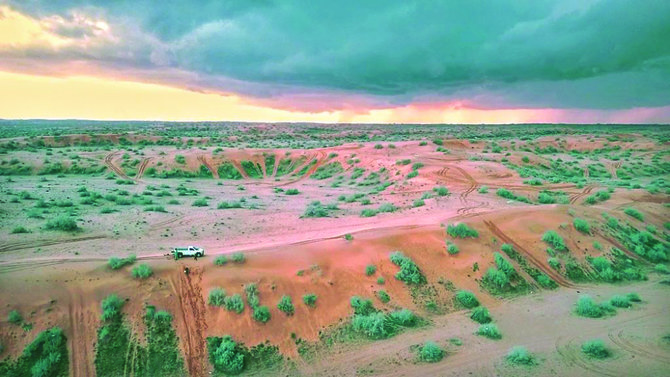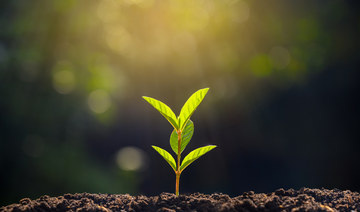MAKKAH: Saudi Arabia’s recently launched National Parks Program will benefit the environment and local communities, and provide a boost to sustainable tourism and by attracting local and foreign visitors, according to the National Center for Vegetation Cover Development and Combating Desertification.
The program, unveiled by the center this month, includes plans to establish and enhance 100 national parks within five years and showcase the Kingdom’s natural splendor and treasures. It also includes the planting of 50 million trees as part of the Saudi Green Initiative.
Abdul Rahman Al-Dakhil, a spokesman for the center, said that the program will help to achieve the goals of the Kingdom’s Vision 2030 development and diversification project and the Saudi Green Initiative.
He added that the center will promote and develop the parks program by supporting afforestation efforts and sustainable ecotourism initiatives, while helping to protect the environment in partnership with governmental organizations.
“The program will be implemented in phases, whereby the first phase will target 100 national parks and turn them into sustainable landmarks, followed by other phases and goals,” Al-Dakhil told Arab News.
HIGHLIGHTS
• The program, unveiled by the center this month, includes plans to establish and enhance 100 national parks within five years and showcase the Kingdom’s natural splendor and treasures. It also includes the planting of 50 million trees as part of the Saudi Green Initiative.
• Some areas of land allocated for the development of national parks have special historical, cultural, geological or archaeological significance. The project includes some of the most important sites in the Kingdom, including the Edge of the World, which is located northwest of Riyadh and was formed about 180 million years ago, and the ancient Muawiyah Dam, also known as Saysad Dam.
“Achieving tourism and environmental balance is one of the most important criteria while developing any park.”
The planting of more wild trees will be be carried out by staff from the center, along with workers from environmental associations and organizations.
Some areas of land allocated for the development of national parks have special historical, cultural, geological or archaeological significance. The project includes some of the most important sites in the Kingdom, including the Edge of the World, which is located northwest of Riyadh and was formed about 180 million years ago, and the ancient Muawiyah Dam, also known as Saysad Dam.
Abdulrahman Alsoqeer, chairman of the Environmental Green Horizons Society, said that the Kingdom is experiencing an environmental renaissance, focused on preserving vegetation and expanding afforestation efforts, that is attracting global attention. The National Parks Program is part of this green renaissance, he added.
“Allocating lands for national parks is an important primary step in protecting the vast areas of government lands that are scattered and untapped, and converting them into vast vegetation reserves,” Alsoqeer told Arab News.
He said that there are a number of benefits to establishing and maintaining national parks, including the restoration of vegetation cover that has deteriorated drastically in the recent decades. It can also improve the quality of life by reducing the intensity of dust storms, improving the climate, and enhancing the visual landscape with the addition of more greenery.
In addition, a number of products can be derived from the plants cultivated in the parks, including honey provided by bees that will thrive among the wild plants.
Local communities in the vicinity of the parks will also benefit from increased employment and investment opportunities, enhanced biodiversity, the protection of endangered plant and animal species, and the enhancement of ecotourism and recreation options.














